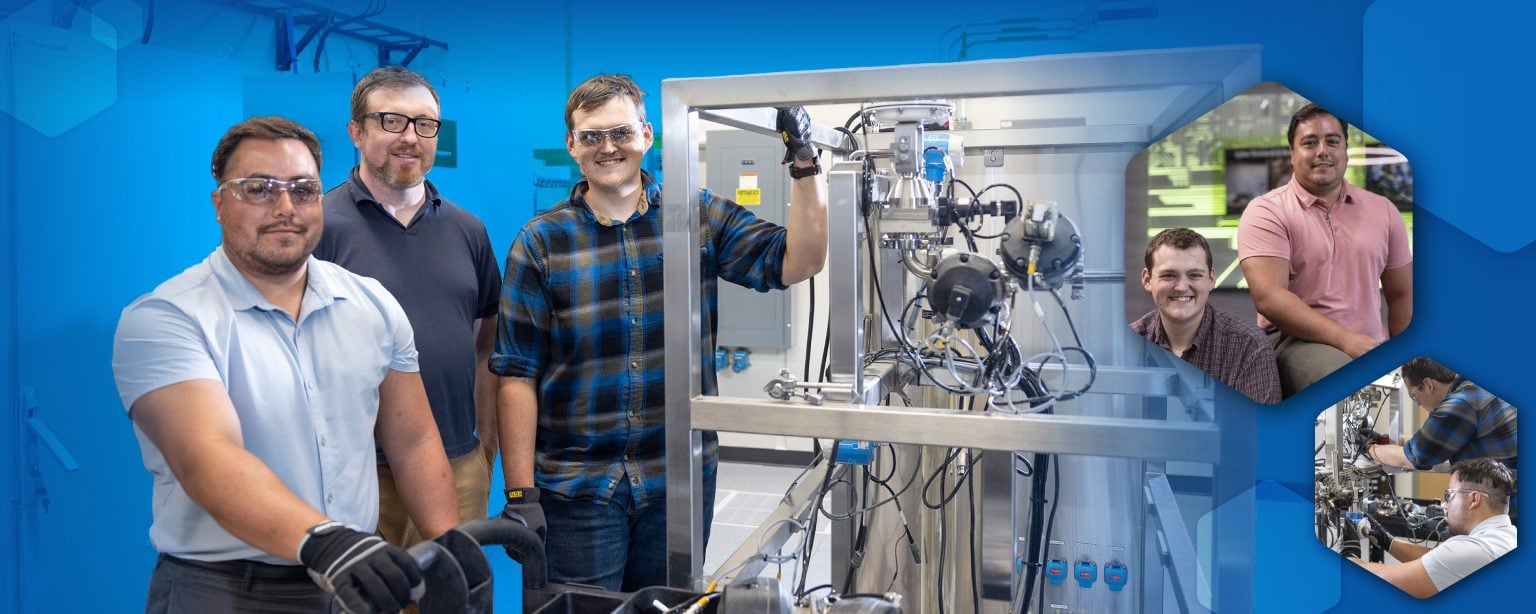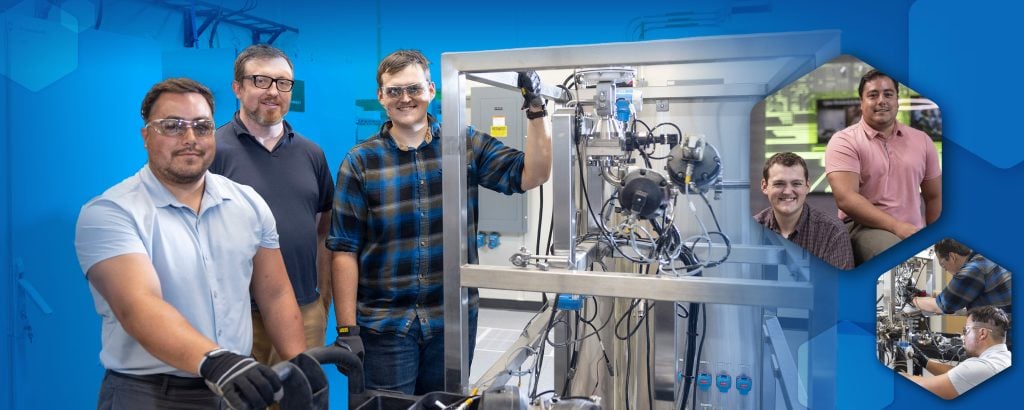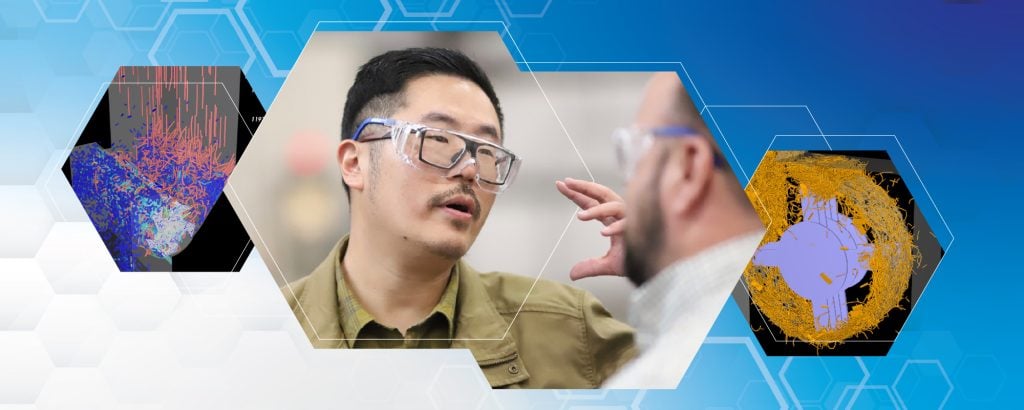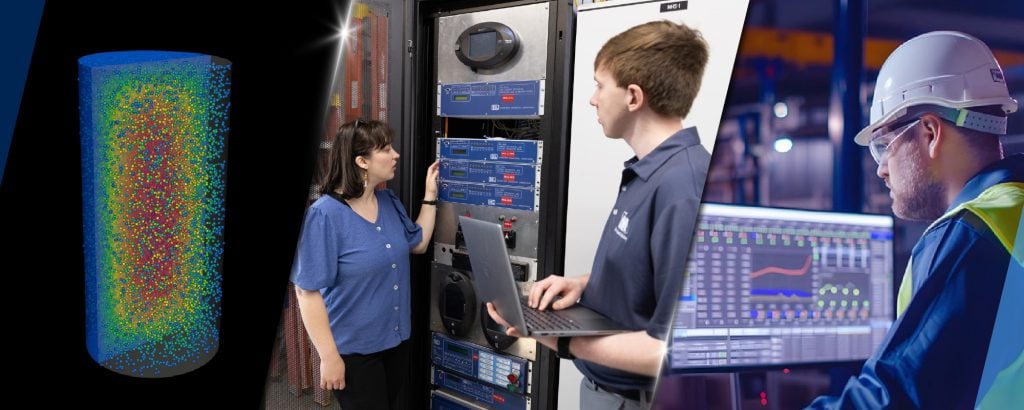Though they’d never met before the summer of 2025, interns James Dawson and Andrew Bonilla were a dream team for the Idaho National Laboratory’s (INL) Cybercore Integration Center.
Dawson, from Idaho State University, specialized in industrial control systems and operational technology. Bonilla, from University of Idaho, arrived with a solid grasp of information technology and cybersecurity, but sought to learn more about designing and understanding systems.
Early in the summer, Bonilla and Dawson attended INL’s hands-on Industrial Control Systems Cybersecurity Training. As blue team members, the interns’ objective was to improve the efficiency of the process at the fictitious Acme Chemical Co. and to protect the control system from being corrupted by attacks from the red team. They amazed their instructors by tying an all-time course record of the number of chemical batch processes completed during a “red/blue” exercise in a simulated control system environment.
“They had only onboarded two weeks earlier and are fresh out of school, and yet they held their own with industry participants and more seasoned practitioners,” said Jeff Hahn, Cybercore Program Manager. “People come from all over the world to take this course, and their performance was a real testament to their skills and capabilities.”
In summer 2025, over 25% of interns hosted by INL’s National and Homeland Security directorate came from Idaho universities, and over 30% of the directorate’s staff have a degree from an Idaho college or university.
“They’re helping develop future hands-on training where students can test methodologies on real equipment,” said Eleanor Taylor, a Cybercore mentor and workforce development specialist.
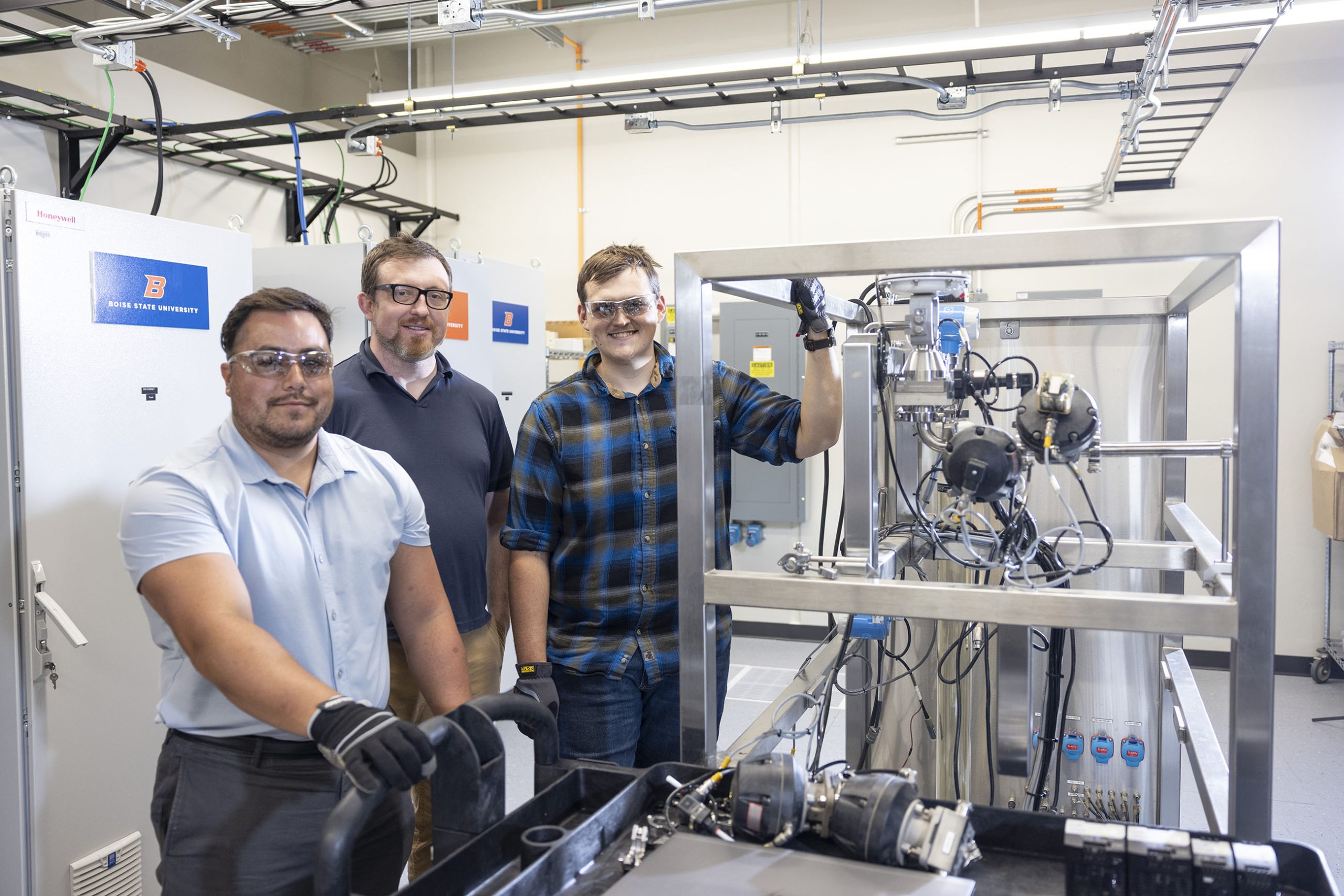
Pairing Dawson and Bonilla complemented Cybercore’s multidisciplinary approach and has given Taylor greater insight into how students from the University of Idaho and Idaho State University can work together for maximum impact. “I’ve been so impressed with how well they work together and what they have been able to accomplish,” Taylor said.
At Idaho State University, Dawson earned two associate degrees in energy systems industrial cybersecurity and nuclear operations technology. He also earned a bachelor’s in applied science in cyber physical systems engineering technology. School gave him a great deal of experience on the operations side, but the internship at INL allowed him to dig a lot deeper into programming and cyber-informed engineering, which stresses the integration of informational and operational technology as new systems are developed.
“I’ve gotten to work a lot more on the design side,” he said. “A lot of times, these industrial control systems are so old they don’t always play nice with new technology.”
Bonilla earned his bachelor’s in cybersecurity from the University of Idaho in May, focusing on cybersecurity policy, infrastructure support, vulnerability and threat analysis, and software and hardware enumeration. His INL internship added operational technology systems experience to his strong software knowledge.
“Since I’ve been here, it hasn’t really felt like a job,” he said. “Every day we’re learning new things.”
Bonilla came to INL through the CyberCorps Scholarship for Service program, which provides support for up to three years of cybersecurity education at undergraduate and graduate levels. All Idaho state universities offer the program, which is funded by the National Science Foundation. The grant requires recipients to work after graduation for the U.S. government in cybersecurity position for at least the duration of the scholarship.
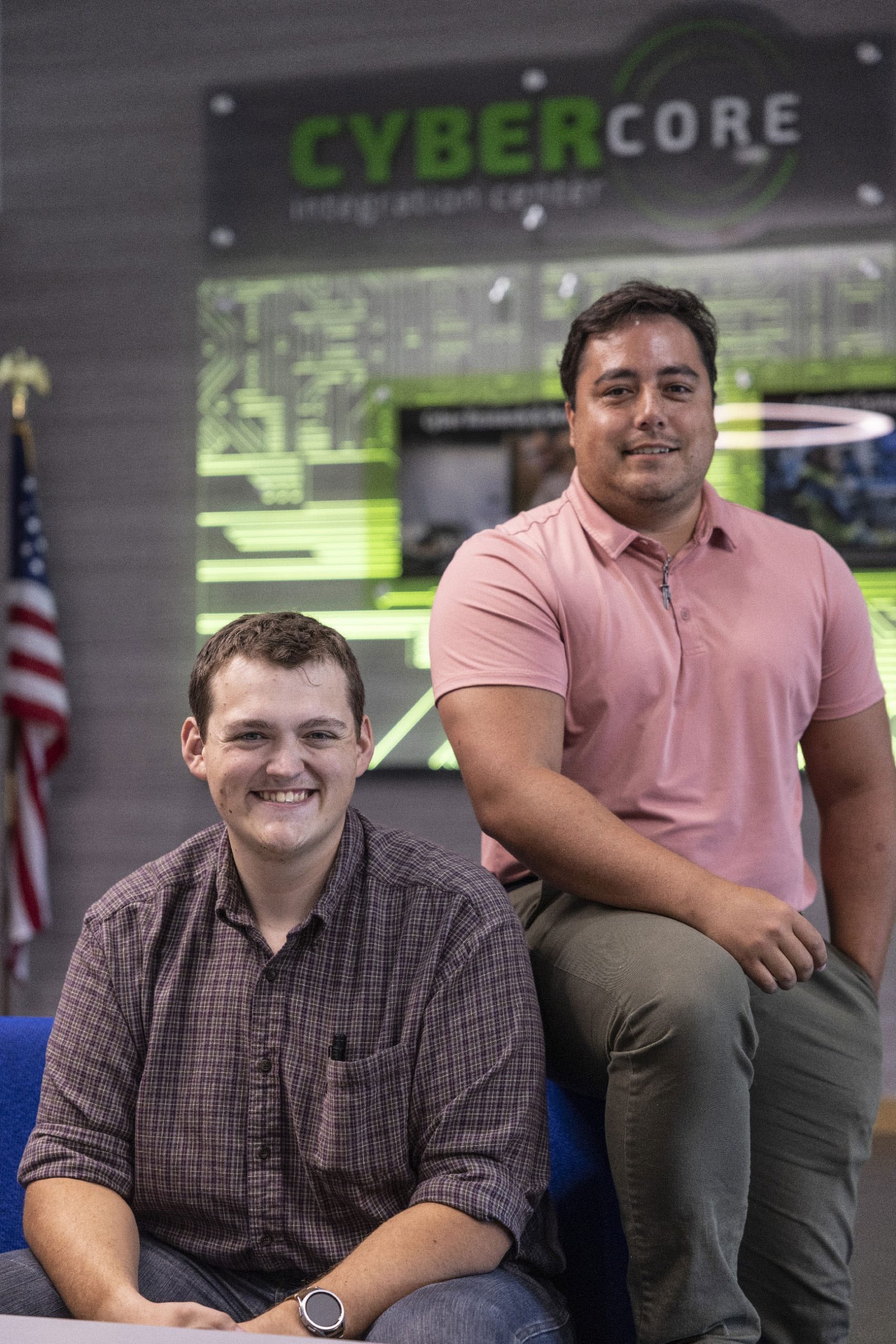
Idaho has a wealth of options when it comes to cybersecurity education. State institutions have long been recognized as Centers for Academic Excellence in cybersecurity education programs. The National Security Agency established the Centers for Academic Excellence, and in 1998 the first seven schools in the nation to be designated included Idaho State University and the University of Idaho. The program boasts 484 institutions, including Boise State University, the College of Eastern Idaho and the College of Western Idaho.
“The cybersecurity programs offered across the state complement each other well and provide different areas of emphasis,” Taylor said. “That’s a critical element for workforce development and creating future professionals that will protect and defend our critical infrastructure.”
Cybercore Integration Center is also home to the University Lab. This lab includes industry-standard and sector-specific operational technology equipment to give students and researchers familiarity with capabilities they might not easily find elsewhere. INL is committed to strengthening cybersecurity capabilities, and support from the Idaho Legislature in 2017 was crucial when it approved $90 million in bonds to build Cybercore and the Collaborative Computing Center. These facilities have been a force multiplier by students hands-on and real-world experience needed in the workforce.
“Cybersecurity is a team sport, and everyone has a role to play,” said Sean McAraw, INL’s Cybercore Director. The learning opportunities we have been able to create would not be possible without the support of the state and our education partners.”

